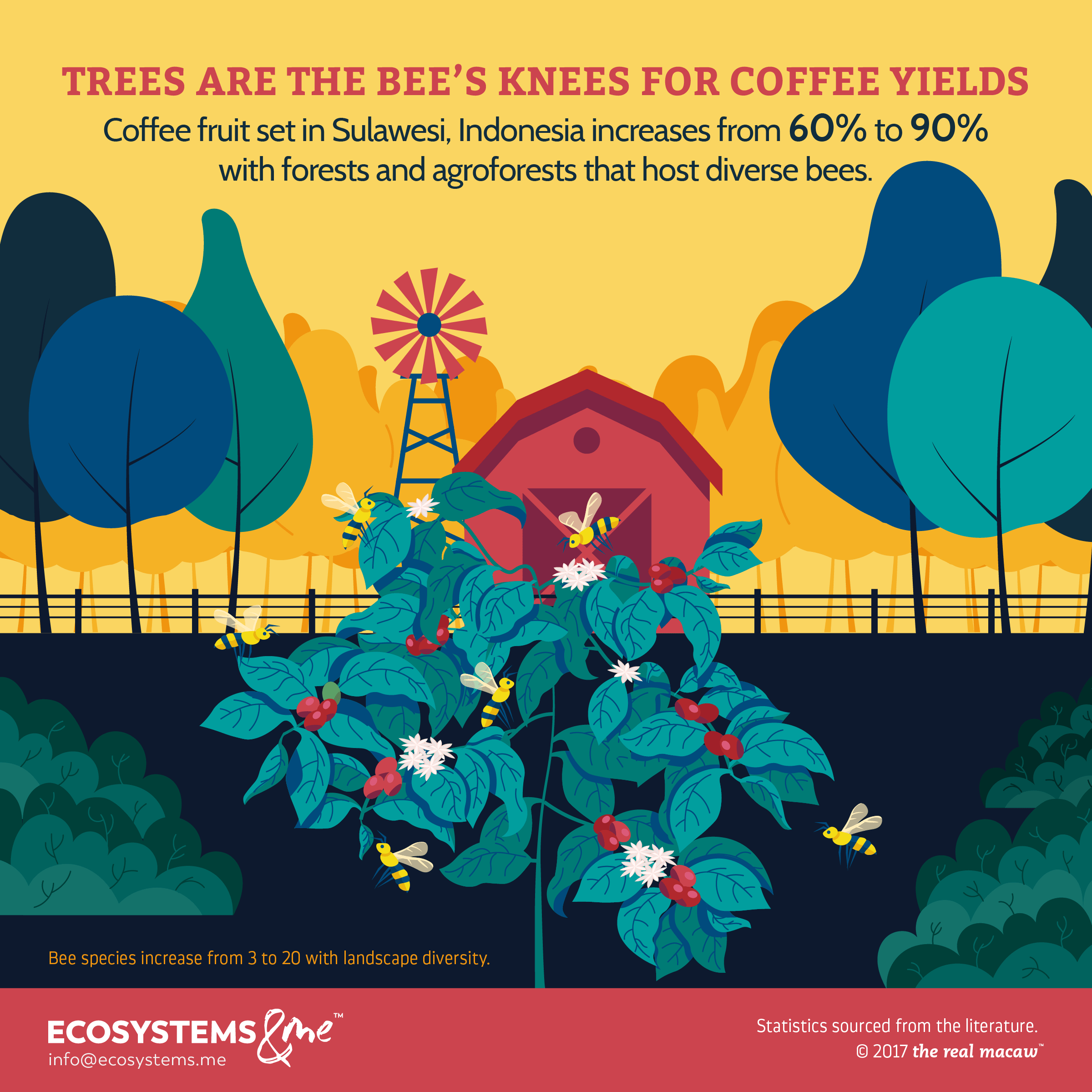
Did you know that coffee is actually a forest plant? Traditionally, it grows in the understory, beneath shade trees. It originated in the cloud forests of Ethiopia, and can be found wild there even today. Agroforestry, or planting trees on farms, can recreate this canopy, and this can increase fruit set (a proxy for yield) – but too much shade can also be harmful. So to maximize yield, coffee needs a diverse landscape, with forests, farms, and trees.
Coffee fruit set, and bees
Fruit set is the percentage of a plant’s flowers that grow fruit. For coffee, that’s the cherry, which contains the beans. But that only happens when flowers are pollinated – and even though coffee can pollinate itself, bees are a big help.
The highest coffee yield comes from having the largest variety of trees and forests nearby.
Bees can be social or solitary, and they’re good at different things. In agroforestry-coffee systems in Sulawesi, Indonesia, social bees visit almost twice as many flowers as solitary bees. But solitary bees are much more efficient: pollination is much more likely when they show up. So maximizing fruit set means maximizing the variety of bee species. Which is why fruit set increased from 60% to 90% when the number of bee species increased from 3 to 20!
Forests, agroforestry, and landscape diversity
The question is how to make that happen. Well, you need both types of bees, and it turns out that social bees love to hang out in forests. In Sulawesi, the coffee farms were next to the Lore-Lindu National Park, which protects 218,000 ha of forests, from low-altitude tropical to mountainous sub-alpine. It became a UNESCO Biosphere Reserve in 1978 and provides habitat for a lot of plant and animal species, some of which are bees. So, as you might expect, a larger variety of bee species visited coffee farms closer to the forest.
Fruit set increased 50% when the number of bee species increased from 3 to 20.
On the other hand, solitary bees prefer sun (and less shade) for their nests. But that doesn’t mean zero shade, because they also prefer having a variety of plants. Agroforestry systems have a range of trees and shrubs with different physical and natural properties, and that attracted the solitary bees.
So all together, forests and agroforestry support diverse bee populations, which improve yields. Which means that in other words, you make it happen through landscape diversity.
